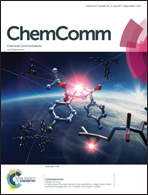The strategies for identification and quantification of SUMOylation
Abstract
SUMOylation is a post-translational modification that plays critical roles in a multitude of cellular processes including transcription, cellular localization, DNA repair and cell cycle progression. Similar to ubiquitin, the small ubiquitin-like modifiers (SUMOs) are covalently attached to the epsilon amino group of lysine residues in the substrates. To understand the regulation and the dynamics of post-translational modifications (PTMs), the identification and quantification of SUMOylation is strictly needed. Although numerous proteomic approaches have been developed to identify hundreds of SUMO target proteins, the number of SUMOylation signatures identified from endogenous modified proteins is limited, and the identification of precise acceptor sites remains a challenge due to the low abundance of in vivo SUMO-modified proteins and the high activity of SUMO-specific proteases in cell lysates. In particular, very few sensitive strategies are available for accurate quantification of SUMO target proteins. Within the past decade, mass spectrometry-based strategies have been the most popular technologies for proteome-wide studies of SUMOylation. Recently, some new approaches such as single-molecule detection have been introduced. In this review, we summarize the strategies that have been exploited for enrichment, purification and identification of SUMOylation substrates and acceptor sites as well as ultrasensitive quantification of SUMOylation. We highlight the emerging trends in this field as well.



 Please wait while we load your content...
Please wait while we load your content...